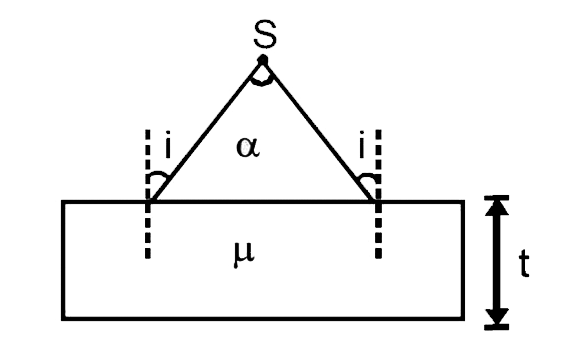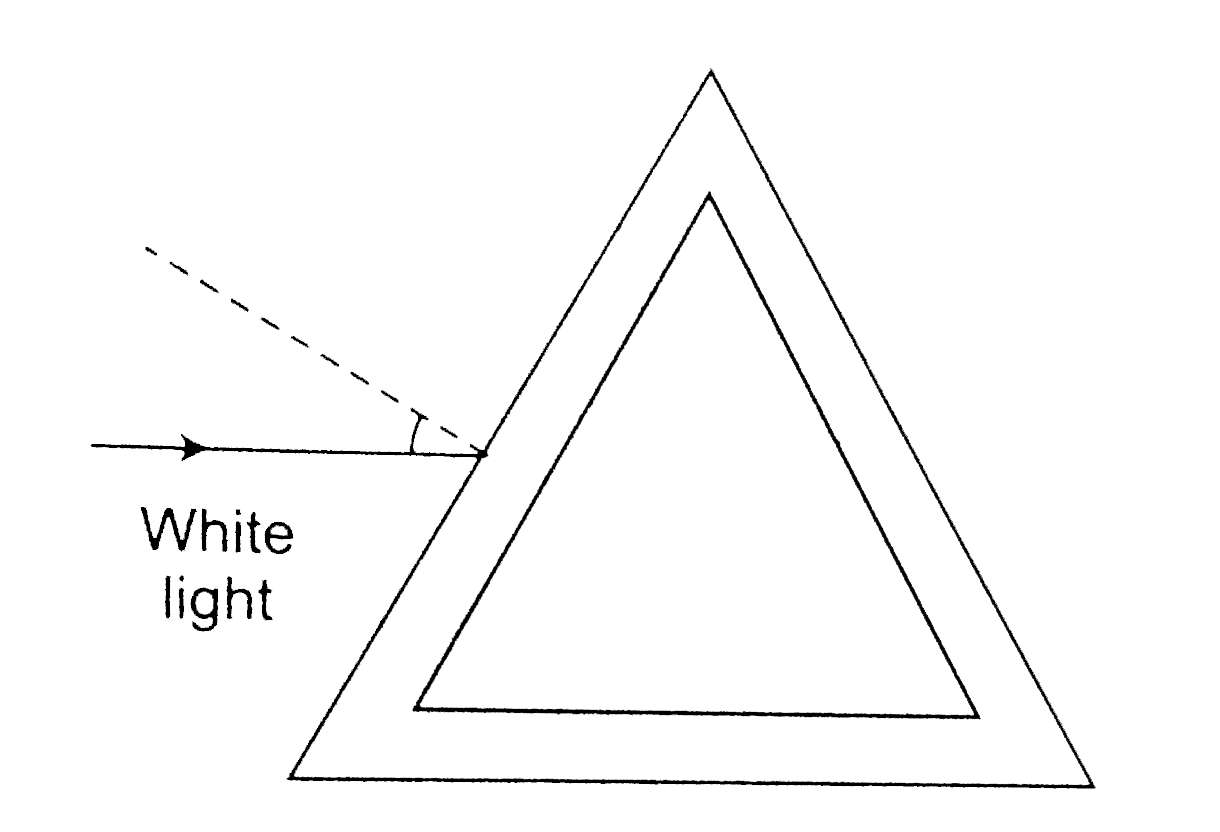Assertion : A beam of the white light shows no dispersion on emerging from a glass slab.
Reason : Dispersion in a glass slab is zero.
If both assertion and reason are true and reason is the correct explanation of assertion.
If both assertion and reason are true and reason is not the correct explanation of assertion.
If assertion is true but reason is false.
If both assertion and reason are false.
The correct Answer is:C
To solve the assertion and reason question, we need to analyze both statements carefully.
Step 1: Understand the Assertion
The assertion states that "A beam of white light shows no dispersion on emerging from a glass slab."
Explanation: When white light enters a glass slab, it is made up of different colors (red, orange, yellow, green, blue, indigo, violet). Each of these colors has a different wavelength and refracts at slightly different angles due to the varying speeds of light in the glass. However, when the light exits the slab, all the colors emerge together as white light because they are parallel to each other. Thus, there is no visible dispersion when the light exits the slab.
Step 2: Understand the Reason
The reason states that "Dispersion in a glass slab is zero."
Explanation: Dispersion refers to the separation of light into its constituent colors. Inside the glass slab, there is indeed dispersion as the different colors refract at different angles. However, because the glass slab has parallel sides, the light rays that are dispersed inside the slab are brought back together when they exit. Therefore, while there is dispersion occurring inside the slab, it does not result in a visible separation of colors when the light emerges.
Step 3: Analyze the Relationship
Now we need to determine if the reason correctly explains the assertion.
- The assertion is true: White light does not show dispersion upon emerging from the glass slab.
- The reason is also true: There is dispersion occurring within the glass slab. However, it does not explain why the assertion is true, as the reason incorrectly states that dispersion is zero.
Conclusion
Both the assertion and reason are true, but the reason does not provide a correct explanation for the assertion. Therefore, the correct answer is:
Both assertion and reason are true, but reason is not the correct explanation of assertion.
Final Answer
Option B: Both assertion and reason are true, but reason is not the correct explanation of assertion.
---
The assertion states that "A beam of white light shows no dispersion on emerging from a glass slab."
The reason states that "Dispersion in a glass slab is zero."
Now we need to determine if the reason correctly explains the assertion.
- The reason is also true: There is dispersion occurring within the glass slab. However, it does not explain why the assertion is true, as the reason incorrectly states that dispersion is zero.
Both the assertion and reason are true, but the reason does not provide a correct explanation for the assertion. Therefore, the correct answer is:
Option B: Both assertion and reason are true, but reason is not the correct explanation of assertion.
Topper's Solved these Questions
- BOOK - NCERT FINGERTPS ENGLISHCHAPTER - RAY OPTICS AND OPTICAL INSTRUMENTSEXERCISE - MULTIPLE CHOICE QUESTIONS100videos
RAY OPTICS AND OPTICAL INSTRUMENTS
- BOOK - NCERT FINGERTPS ENGLISHCHAPTER - RAY OPTICS AND OPTICAL INSTRUMENTSEXERCISE - Reflection Of Light By Spherical Mirrors5videos
RAY OPTICS AND OPTICAL INSTRUMENTS
- BOOK - NCERT FINGERTPS ENGLISHCHAPTER - RAY OPTICS AND OPTICAL INSTRUMENTSEXERCISE - NCERT EXAMPLAR PROBLEMS11videos
RAY OPTICS AND OPTICAL INSTRUMENTS
- BOOK - NCERT FINGERTPS ENGLISHCHAPTER - PRACTICE PAPPEREXERCISE - Practice Paper 350videos
PRACTICE PAPPER
- BOOK - NCERT FINGERTPS ENGLISHCHAPTER - SEMICONDUCTOR ELECTRONICS : MATERIALS , DEVICES AND SIMPLE CIRCUITS EXERCISE - Assertion And Reason15videos
SEMICONDUCTOR ELECTRONICS : MATERIALS , DEVICES AND SIMPLE CIRCUITS
Similar Questions
Knowledge Check
- Question 1 - Select One
White light is incident normally on a glass slab. Inside the glass slab,
Ared light travels faster than other coloursBviolet light travels faster than other coloursCyellow light travels faster than other coloursDall colours travels with the same speed. - Question 2 - Select One
Assertion : When a plane wave passes through a thin prism, the emerging wavefront gets tilted.
Reason : Speed of light is less is glass than in air.AIf both assertion and reason are true and reason is the correct explanation of assertion.BIf both assertion and reason are true but reason is not the correct explanation of assertion.CIf assertion is true but reason is false.DIf both assertion and reason are false.
When a ray of light enters a glass slab from air.
View SolutionWhen a ray of light enters a glass slab from air
View SolutionOrdinary light is incident on the upper surface of a glass slab at theh polarizing angle. Then
View Solution
A diverging beam of light from a point source S having devergence angle α, falls symmetrically on a glass slab as shown. The angles of incidence of the two extreme rays are equal. If the thickness of the glass slab is t and the refractive index n, then the divergence angle of the emergent beam isView SolutionA narrow beam of white light goes through a slab having parallel faces.
View SolutionA ray of monochromatic light is incident from air on a glass slab.
Mark the lateral displacement in your diagram.View Solution


